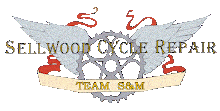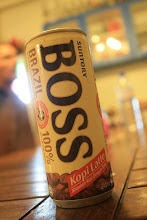I don't much fancy big birthday to-do's so over the span of that weekend, I hit the road with a few friends on Friday night for a quick jaunt to Sokcho. Sokcho is a small coastal metropolis in the Northeast corner of South Korea. It is famous for deep fried/battered shrimp and a squid version of the ever so popular soondae, among other coastal cuisines; the mountains within Seoraksan Park; the beautiful autumn scenery; and to some, the House Hostel.

Daddy's pants.
It's very tempting to explore the variety of regions Korea has to offer in our limited time here, but places like Sokcho are hard to enjoy just once. The city provides plenty without overwhelming the opportunity to escape the constant bustle of Seoul. While the mountains are beyond explanation to those unfamiliar with Korea.
Our (my) primary objective on this trip was to walk to the top of the highest peak in the park, Daechongbongsan. It ranks third on the list of high altitudes in Korea, at a whopping 1708m. Three out of the four of us had successfully conquered this one in the fall, but were disappointed to sit in the clouds at the top. (Un)fortunately if I want to see the view, I'm going to have to return once more because this time the trailhead was closed due to fire season. Therefore we settled for the next greatest attraction in the park, Ulsanbawi. As disappointed as we were (some of us at least) at missing the opportunity to satisfy the primary objective, Ulsanbawi was, not in the slightest, a disappointment in the end.
As you can see, Koreans (nor the trail designers) are not afraid to use all means necessary to reach the top. Even if it means utilizing an erector set of metal stairs strapped to the side of a shear rock face. Its amazing to think someone, at some time, hauled all that up there.

Korean hiking.
It's not only hard to believe (for an American) the park doesn't require some kind of training to prevent serious lawsuits, but observing the strong will of the toddler aged to grandmothers who casually cruise up these stairs is phenomenal. In the end, the view was particularly excellent on that day, and so was the discovery of the Gorp infused peanut butter and jelly sandwich. (note: I'm not saying anyone here invented it, it was only discovered, like electricity.)
You can see the mountain we were hoping to climb the back ground. We all agreed in the end that the view of the top (Daechongbonsan) could be just as pleasing as the view from the top.

PBJ & Gorp.

Seoraksan Park.
Although the mountainous appeal of Seoraksan Park is enough, there is also an enormous Buddha, a gondola (for the lazy bones), and a variety of sweet dipped corn dogs. I went for the chocolate covered with sprinkles.

Buddha.
I would've thought most people probably make the trip to Sokcho to visit the mountains, but that may be an incorrect assumption. On a sunny Sunday, we covered quite a bit of the city by foot. It seems as though there are droves of people coming to the area for the food and smell of the fresh air. I can't say I blame them.
One of my favorite parts of this place is the abundance of these Tsunami barricades. All of which are formed using massive cement jacks stacked in neat rows which make very appealing patterns. Though alone they are still quite nice.

Tsunami Jacks.
The tell tale sign that Sunday's are popular in Sokcho is a long line at each end of this human powered ferry. For the equivalent of less than 20 cents US, you can take the ferry one way. There is a cable anchored to each side of the channel, and passengers can volunteer to pull the cable from one end of the ferry to the other, propelling the flat boat towards the other side. The alternative to taking the ferry is a really long walk. A functional tourist attraction.
Pull boat.
I'm not really sure why this picture is relevant, other than illustrating the quite atmosphere a foreigner can enjoy in Sokcho. Even though this particular individual lives on the "Hawaii of Korea."

Old Man and the Sea.
Surprising enough I managed to miss any opportunity to take a picture of the Cherry Blossom pandemonium in Seoul, which lasts the course of about a week. Luckily this one was locked up before it shed it's springtime mess.

Cherry Blossom.















